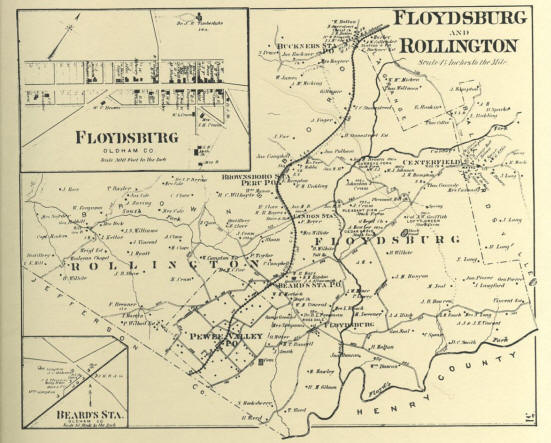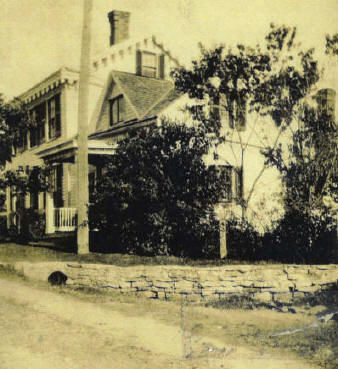“Rollington”
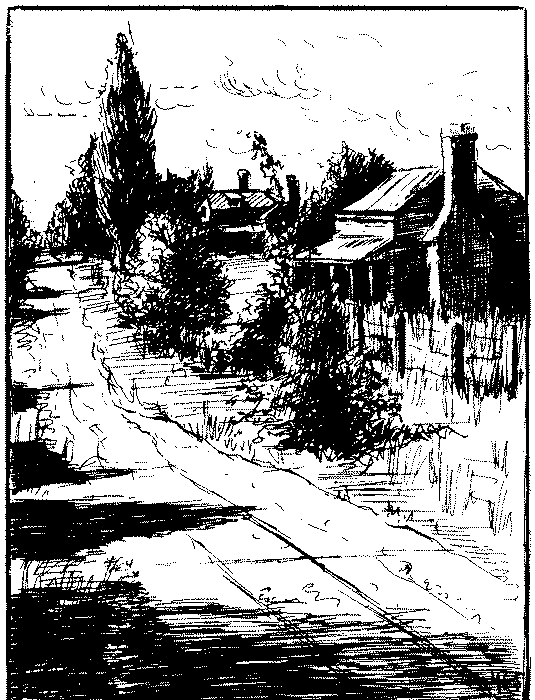
This sketch of Rollington, drawn by Mary G. Johnston,
Annie Fellows Johnston’s step-daughter, provides a glimpse of how Rollington
looked during the Little Colonel era.
Many scenes in the Little Colonel series, from “The Little Colonel’s Christmas Vacation” through “The Little Colonel’s Knight Comes Riding,” take place in Rollington, a community located down Central Avenue from Lloydsboro Valley, past The Gables, past Edgewood and past The Beeches near what is now Highway 22. In the books, Annie Fellows Johnston depicts many Rollington residents as impoverished, such as in the passage below from Chapter XII of “The Little Colonel’s Christmas Vacation:”
But in five minutes, Lloyd… was listening with interest to their account of a call they had just made in Rollington. They had been to see a poor washerwoman who had five children to support. The youngest, a baby who had fits, was very ill, about to die. At the mention of Mrs. Crisp, Lloyd recalled the forlorn little woman in a wispy crepe veil, who had enlisted her sympathy to such an extent one Thanksgiving Day that she and Betty had walked over to Rollington from the Seminary to carry the greater part of the turkey and fruit that had been sent them in their box of Thanksgiving goodies.
There was so little poverty in the Valley that, when any real case of suffering was discovered, it was taken up with enthusiasm.
“Long before Pewee Valley began developing as a community, Rollington had established itself as a settlement and overnight stop in the road between Louisville and Brownsboro,” says “A Place Called Pewee Valley,” prepared by the Pewee Valley Centennial Commission in 1970 to commemorate the 100-year anniversary of the town’s incorporation. Rollington and Floydsburg were actually the first two major pioneer settlements in the southeastern corner of what is now Oldham County, predating Pewee Valley’s 1870 incorporation by more than half a century.
During the Annie Fellows Johnston era, Rollington was home to St. Aloysius Catholic Church, according to “History & Families of Oldham County, Kentucky: The First Century,” page 262:
…St. Aloysius Roman Catholic Church was first organized in 1840…The first services were held in private homes in Rollington…In 1863, the first small mission church was built in Rollington at a location that came to be known as “Catholic Hill.” (Note: on the corner of what is now the intersection of Central Avenue and Rollington Road.) With the purchase of a small plot of land, a cemetery was laid out and a small frame gabled church was constructed.
Since the church moved to its present location on Mt. Mercy Drive in 1914, Catholic Hill has been used exclusively as a cemetery. The original church building was moved and incorporated into another home on Rollington Road, according to Pewee Valley Historian Gin Chadouin.
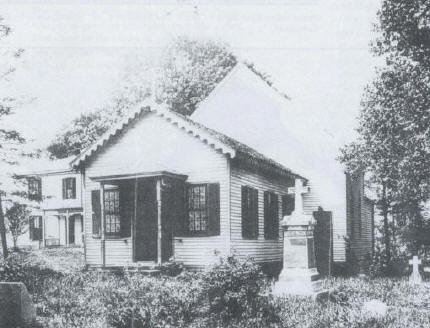
St Aloysius Original Church in Rollington
The original St. Aloysius Church building on Catholic Hill in Rollington.
Part of it was moved and incorporated into the home below now located on Rollington Road.
Across Rollington Road from Catholic Hill was the Foley family’s first home in the area. The Foleys operated a meat market for some years at H.M. Woodruff’s Pewee Valley store. In 1903, they bought both the store and the Woodruff’s home next-door. The original Foley house is still standing on the corner of Rollington and Central and is pictured below:
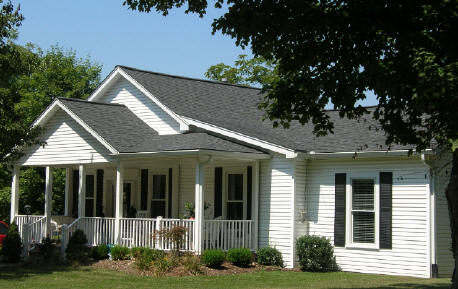
Across Rollington Road from Catholic Hill was the Foley family’s first home in the area. The Foleys operated a meat market for some years at H.M. Woodruff’s Pewee Valley store. In 1903, they bought both the store and the Woodruff’s home next-door. The original Foley house is still standing on the corner of Rollington and Central and is pictured below:
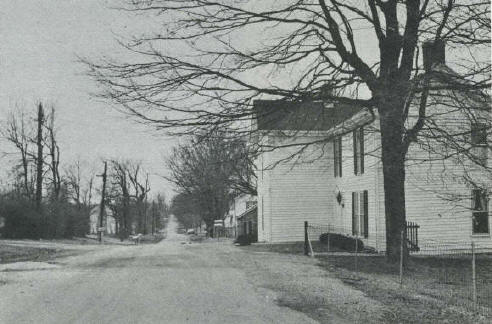
Foley House in Rollington
Annie Fellows Johnston would have passed by the Foley house, at the corner of Rollington Road and Central Avenue, on her way to picnicking at the Old Mill. Photo from “A Place Called Pewee Valley,” prepared by the Pewee Valley Centennial Commission in 1970.
Below, the Foley house as it looks today.
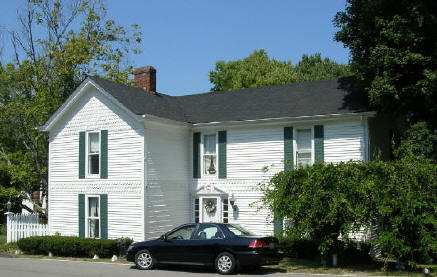
As shown in Mary Johnston’s sketch above, log cabins were prolific in Rollington during the Little Colonel era. Many, such as the home of Pewee Valley blacksmith, and later Ford auto dealer, Jacob A. and Carrie Lutz Herdt shown on the next page, have been destroyed by fire.
During the Little Colonel era, Jacob and Carrie Lutz Herdt lived in this lovely home
on Rollington Road. The low portion of the house with the porch was originally a log cabin.
The two-story addition is thought to have been built about 1916.
The house burned in 1943 and was located on the south side of Rollington,
just east of the bridge nearest Central Avenue.
Some of Rollington’s original log homes exist today, but have been extensively remodeled, as shown in the following photos.
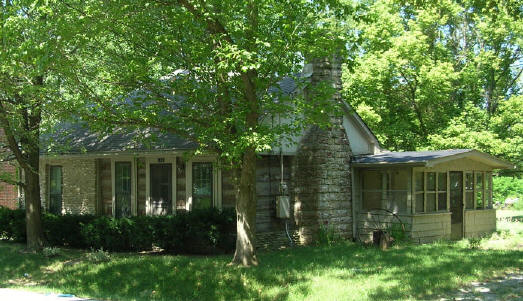
The only log cabin remaining on Rollington Road with
some of its exterior log siding still visible.
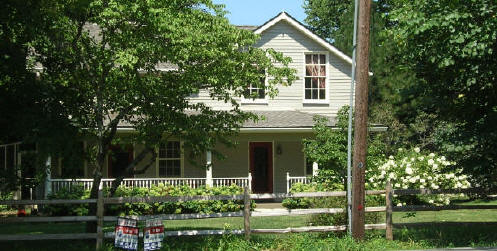
Located at the intersection of Houston and Rollington roads,
this is one of Pewee Valley’s & Oldham County’s oldest homes.
Beneath the lap siding is the original log.
The old inn, where travelers once found sustenance on the stagecoach road, is now gone. The photo below shows the inn as it looked in 1970. It was located on the north side of Rollington near what is now Fraziertown Road.
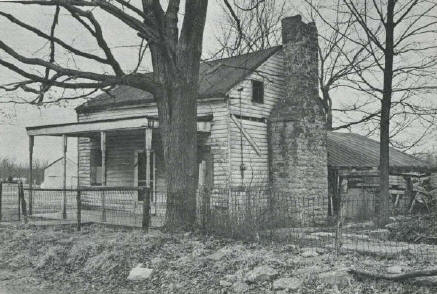
The Old Inn at Rollington, around 1970
From “A Place Called Pewee Valley,” prepared by the Pewee Valley Centennial Commission
Also located in what was once known as Rollington was this elaborate “Folk Victorian” or “Victorian Vernacular”style house pictured below. Known as Ash Lea or the George Miller House, it was built on Central Avenue about 1873 and was owned by George and Kate Miller from 1876 until 1914, according to information submitted to the National Register of Historic Places.
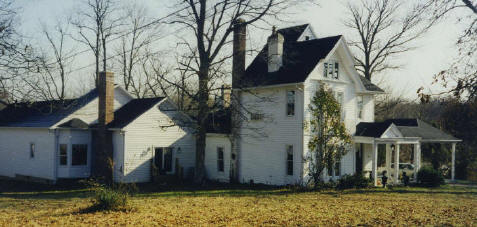
Ash Lea in the fall
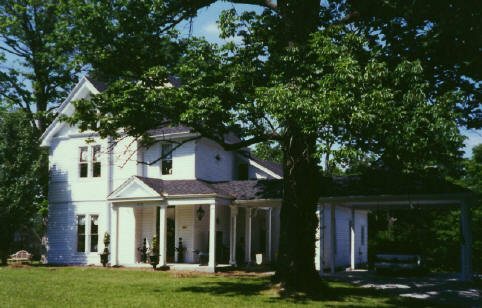
Ash Lea in the summer
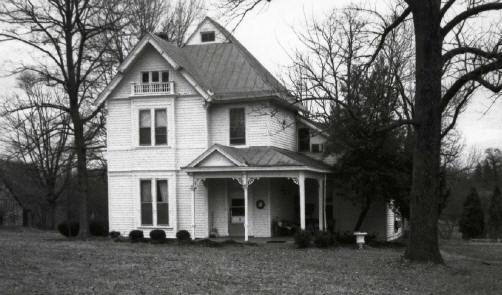
Ash Lea in 1991
Photo from “Historic Pewee Valley”
This shows the house as it looked before extensive remodeling, which included some aspects of the exterior.
